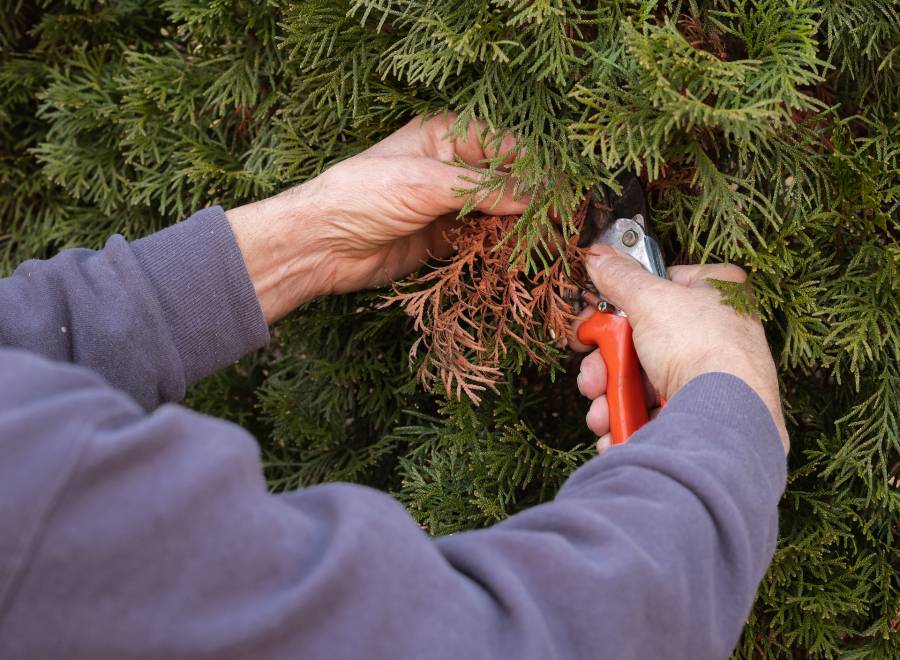How Tree Trimming Affects Photosynthesis and Growth

Trees are essential components of our environment, providing various benefits such as improving air quality, offering shade, and even boosting property value. To maintain their health and aesthetics, tree trimming is often necessary. However, the process can have a significant impact on a tree’s photosynthesis and growth.
This article will delve into the effects of tree trimming on photosynthesis and growth and provide some helpful tips and insights from tree services and tree trimming experts.
The Science of Photosynthesis and Growth
Photosynthesis is the process by which trees and other plants convert sunlight, carbon dioxide, and water into glucose and oxygen. Glucose provides the energy needed for growth, while oxygen is a byproduct released back into the atmosphere. The tree’s leaves are the primary site of photosynthesis, containing chlorophyll, which absorbs sunlight and initiates the process.
Tree growth occurs in two main ways: primary growth, which involves the elongation of branches and roots, and secondary growth, which refers to the thickening of the trunk and branches. Both types of growth require energy from the glucose produced during photosynthesis.
How Tree Trimming Affects Photosynthesis
Tree trimming involves the selective removal of branches, twigs, or foliage to improve a tree’s health, appearance, or safety. While tree trimming is essential, it can also have a significant impact on photosynthesis. Here’s how:
1. Reduced Leaf Surface Area: Tree trimming reduces the total leaf surface area available for photosynthesis. Since leaves are responsible for capturing sunlight and producing glucose, removing them can affect the tree’s energy production. The extent of this impact depends on the amount and location of the leaves removed.
2. Temporary Reduction in Photosynthesis Efficiency: Immediately after tree trimming, the remaining leaves may experience a temporary reduction in photosynthesis efficiency. This is because the tree reallocates its resources to heal the wounds created by the trimming process. However, as the tree recovers, photosynthesis efficiency should return to normal.
3. Change in Light Exposure: Tree trimming can also affect photosynthesis by changing the amount and distribution of light exposure. Removing branches and foliage can allow more sunlight to reach the remaining leaves, potentially increasing photosynthesis rates. However, excessive trimming can lead to sunscald, causing damage to the tree’s tissues and reducing photosynthesis efficiency.
The Impact of Tree Trimming on Growth
By altering a tree’s photosynthesis capabilities, tree trimming can also affect its growth. Here are some ways tree trimming can influence tree growth:
1. Redirected Growth Energy: Trees have a limited amount of energy available for growth. When a tree is trimmed, it needs to use some of this energy to heal the wounds from the trimming process. This can temporarily slow down the tree’s overall growth, as less energy is available for primary and secondary growth.
2. Growth Stimulation: Proper tree trimming can stimulate growth in certain areas of the tree. For example, trimming a branch back to a bud can encourage the growth of a new branch in that direction. This can be beneficial for shaping the tree and promoting a balanced canopy.
3. Preventing Overgrowth: Regular tree trimming can help prevent overgrowth, which can be detrimental to a tree’s health. Overgrown trees can have an imbalanced canopy, which can lead to increased stress on the branches and trunk. Additionally, dense canopies can reduce air circulation and increase the risk of pest infestations and diseases.
Tree Trimming Tips to Improve Photosynthesis and Tree Growth
To minimize the impact of tree trimming on photosynthesis and growth, it is essential to follow best practices. Here are some tips you can follow:
1. Time Your Tree Trimming Appropriately: The best time to trim a tree is during its dormant season, which is typically in the late fall or winter. Trimming during this time minimizes the impact on photosynthesis and growth, as the tree is not actively growing.
2. Use Proper Pruning Techniques: Using proper pruning techniques is essential to minimize the impact of tree trimming on photosynthesis and growth. This includes making clean cuts at the right angle and avoiding excessive trimming.
3. Avoid Removing Too Many Branches: Removing too many branches can reduce the total leaf surface area available for photosynthesis and redirect growth energy away from primary and secondary growth. It is important to only remove what is necessary for the tree’s health, safety, or appearance.
4. Hire a Professional Tree Service Company: Hiring a professional tree service can ensure that tree trimming is done correctly and safely. They have the necessary tools, training, and experience to minimize the impact on photosynthesis and growth.
Conclusion
Tree trimming is a necessary task to maintain the health and aesthetics of trees, but it can have a significant impact on photosynthesis and growth. By understanding how tree trimming affects these vital processes and following best practices, you can minimize the impact and ensure your trees remain healthy and vibrant. Remember to time your tree trimming appropriately, use proper pruning techniques, avoid removing too many branches, and hire a professional tree service company to ensure the best results.
If you’re searching for a tree trimming service that you can trust, look no further than Cypress TX Tree Service! Our team of experts has the skills and experience needed to provide top-notch trimming services that will keep your trees healthy and beautiful. Whether you need a few branches trimmed or a complete tree pruning, we’ve got you covered. Don’t wait any longer to take care of your trees—Contact us today to schedule your appointment!
